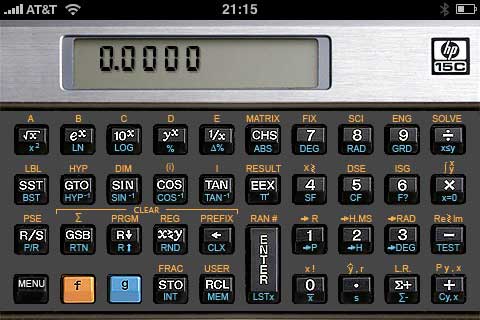The HP-15C was reissued at long last!
It is strange no one seems to have picked up the news yet, but HP has reissued the legendary HP-15C in a special “30th anniversary limited edition”, and it became available for purchase last week.

The new HP-15C is not strictly speaking a reissue but a replica, as it does not use the original’s Saturn processor, but instead an emulation thereof running on an ARM CPU. Even emulated, it should be much faster than the original 640 kilohertz processor. I ordered two, and received them today.
As expected, the quality is in line with the current HP-12C, i.e. not as good as the 1980s models in terms of key feel, but still leagues ahead of any competing product. The originals used a special 47-point bonding process to ensure the utmost in rigidity and reliability, I doubt the current model had as much attention paid to detail. It is made in China, obviously, the Corvallis facility is long gone. The slipcover fits very poorly (too tight, and the seams are not trimmed properly) and feels thinner and outright cheap compared to the original. The labels on the keys are accurately positioned, at least, unlike the train wreck that was the HP-12C Platinum. The cheat sheet in the back is a garish black on silver as on the 35S, instead of the original’s silver on black. It also uses two 3V CR2032 batteries instead of the 3 button cells in the original.
Speed-wise, the Limited Edition integrates the normal distribution nearly instantly, when that test that took 34 seconds on the original.
In short: not as good as the original, but still an excellent calculator for those who prize ergonomics.
